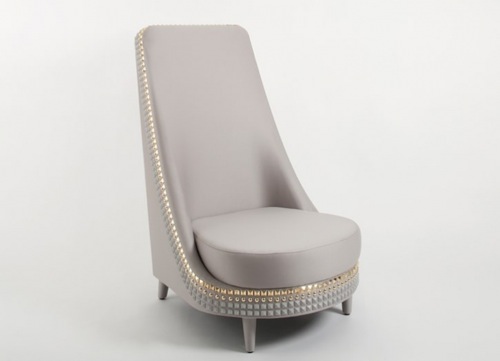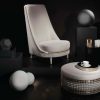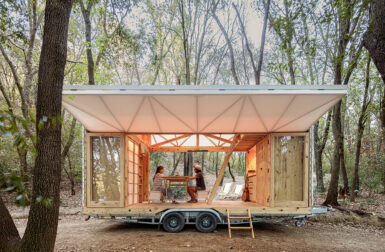
In this month’s Deconstruction, Design Milk gets a behind-the-scenes look at developing and constructing the Salon Armchair from British design darling Lee Broom. Broom, who has designed over 40 bar and restaurant interiors, and formed his own product design company four years ago, started out studying theater, than fashion design. Before he even attended Central St Martins he worked for Vivienne Westwood. This might just explain the enthusiastic studding on the furnishings of his newest collection. Let’s have a look how it’s made.
When planning a new collection, I always start with a mood board. This is updated continuously until the concept evolves into the final design.

After the design has been agreed, my design team and I work on rendering the images to establish what the new collection might look like. I then experiment with colors, textures, and fabrics to ensure all aspects have been explored and considered for the collection.

Stud detailing was a key feature for Salon. In upholstery, studding is traditionally used to hide elements of the manufacturing process, but I wanted to focus on this detail and exaggerate it, echoing luxury fashion accessories and punk rock couture. I color-matched a huge quantity of studs in a range of colors and powder coats. I ended up choosing a faceted metal variety in pale gold and gun metal grey, which were applied by hand to the furniture.

I like to get the whole team involved when I’m selecting the fabric ways and finishes. With this collection, I started with a heavyweight wool and ended up using a very fine wool, similar to a tailored suit fabric.

We usually get color matches from the suppliers, but we occasionally do some at the studio to add to the prototype boards.

Once the concept has been finalized, we send the designs to our manufacturers who build the frames to our specifications. It is exciting to see the designs emerge from paper into a 3D format.

Once the manufacturers complete the frame, the upholstering process begins.

This progression can be a complicated balance of following the design concept whilst considering comfort. Usually the chairs will be stripped and recovered a number of times to get it right.

With the frame and upholstery decided upon, the studding process is then trialed to see whether they easily pierce the fabric and frame. From this, it was established that softer wood was needed to apply the stud detailing.

The moment the prototype arrives is exciting for the team, as all our hard work comes to life. Every detail of the product is then painstakingly checked to ensure that it is fit for production.

The prototype needs to be photographed on a white background to provide a “cut out” image for the press and for the London Design Guide entry. The photographer and I have to agree angles, lighting, and exposure to make sure the product looks its very best.

We then organize a lifestyle shoot, in which we photographed the items in a “real-life” setting – in this case a sharp black background. Showcasing the pieces together is a great way to provide narrative – it also offers press alternative imagery for its pages.

The collection, completed, and photographed.
Thanks, Lee! And thus ends this year’s Deconstruction posts! Read all of the previous Deconstruction posts from 2011 here and stay tuned for our year end review.










